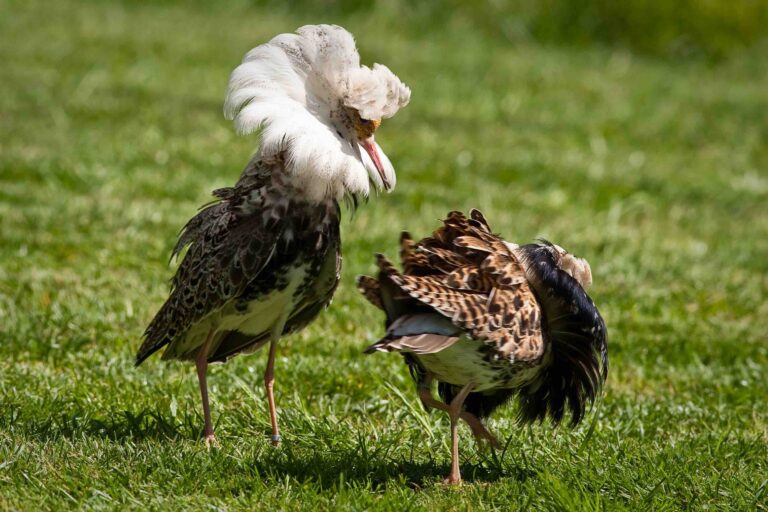On Tuesday 15 February, First Minister Nicola Sturgeon announced that she would be stepping down as Scottish First Minister. The move was reportedly prompted by her attempts to pass legislation that would allow transgender people to change their legal gender without a medical diagnosis, particularly following the detention in a women's prison of a double rapist who identified herself as transgender.
Earlier that morning, a neighbor invited me for an early coffee. As I sipped her excellent coffee, the air echoed with the sounds of birds fluttering and landing on bird feeders hanging from glossy evergreen trees. We counted 19 bird species, and I returned home with a book that fired my imagination more than I could have ever imagined: Karel Šchastny's classic, British and European Birds (1990).
How wrong I was! Hidden among the reams of detail was a startling fact: nest-building was primarily the responsibility of female birds in 14 of the 19 species, or 74 percent. In only five species was the nest-building task shared between males and females, and in only one was it left entirely to the male.
Female Birds: Shedding Light on Sex and Biology
Why is this important? The facts are that there is a consistent division of roles in the bird kingdom and do not suggest that male and female sexes are interchangeable.
Now, coincidentally, female bird nest-building responsibilities overlap with women's house-building responsibilities in ancient cultures, which I wrote about in my book back in 2013. Why men like straight lines and women like polka dots, It shows that homes in many cultures (nomads in Central Asia, Omaha Indians, Seri people of California, inhabitants of the Andaman Islands) were designed and built by women. I wrote at the time that female-designed buildings in many ancient peoples were characterized by “rounded shapes and soft, natural materials,” reflecting the characteristics of nests built by females, rather than those designed by male birds.
The similarities don't end there. According to Šťastný, female goldfinches ensure that their nests blend in perfectly with their surroundings. This matches a human female trait that psychologists call “field dependence.” The term refers to the degree to which a stimulus is perceived independently of its surroundings, and girls/women are less likely to separate a stimulus from its surroundings than boys/men. This may be due to women's involvement in creating human habitats that blend in with their surroundings. Men, therefore, are more “field dependent” and prefer structures that stand out in stark contrast between the bridge's red and the blue of the ocean below, such as the Golden Gate Bridge in San Francisco. Notably, the bridge was built by an all-male team.
space
Then there's the issue of space: hunter-gatherer men, like male birds, are hunters, and their eyes evolved to be 5mm further apart than women's, helping them pinpoint their targets. What's more, significantly more men (8%) than women (1%) are color-blind, a trait that helps them see through camouflage and distinguish prey from its surroundings.
color
Surprisingly, there's also the issue of color. In the human world, 50% of women may have a fourth pigment, meaning they can see hundreds of millions more colors than men. And these women's preferences are Color may also be reflected in the bird world, where differences in the color of birds' plumage are a phenomenon known as “sexual dichromatism,” and are likely the result of female birds preferring brighter colors.
Compare the dazzling plumage of the male peacock to the more subdued appearance of the female peacock. Some say the colorful plumage of the male is a sign of male courage (because the peacock is not hiding his presence), but another explanation is that the color and amount of detail in the feathers are designed to maximize appeal to the color-sensitive female peacock. It is surprising that the interest in color of girls and women, the main focus of my research, is reflected in the preferences of female peacocks.
Regaining Sanity
It seems we must abandon the idea that males and females are interchangeable, whether in birds or humans. In fact, female mimicry, in which a male bird resembles a female for the rest of its life, is very rare and has only been studied in one case, the ruff (Philomachos PagnaxThe common shorebird (Plover) is a species of shorebird in which males secretly accompany females to obtain sexual favors. This phenomenon has always been rare among humans, with statistics showing a low prevalence of 0.3-0.5% of the population.
Certainly, society must tolerate diversity. But Nicola Sturgeon's resignation suggests that she has gone too far in her attempts to encourage people to change their legal gender. Ironically, there were concerns that transgender women in women's prisons could lead to rape. Philomachus pugnaxwhich prompted her to apply to leave Bute House.


